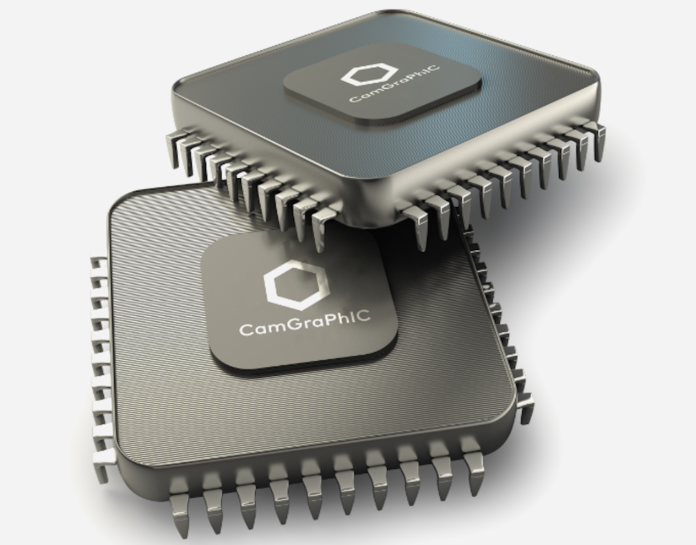Graphene Photonics is 100 times faster, uses 70 less power
Cambridge University spin off GamGraPhic is using graphene-based photonics techniques to build electrical optical cores that are capable of 100 Gbps data transfer without needing any cooling. It could be used to meet demand for ultra-fast short-reach optical links at a fraction of the cost of building today’s 5G comms equipment. It could vastly improve 5G and 6G intra-antenna optical connectivity.
Everything from engines for intra-datacentre transceivers, through processors for optical connectivity for AI applications, antenna for 6G and even Quantum computing could receive a massive surge in productivity, according the inventor. Given its potential, the venture capital raised seems relatively modest, with just £800K staked by Wealth Club clients through the UK government’s Enterprise Investment Scheme (EIS).
By 2023, 29 billion devices will seem instant answers from their mobile network and even 5G may struggle to placate the more demanding customer as cloud gamers, automated stock traders and home working surgeons become increasingly ‘latency intolerant’ – if some market analysts are to be believed. Some independent analysts, such as Dean Bubley of Disruptive Analysis, have warned that 5G has been massively overhypedand that many of industrial applications mooted are built on expectations of undeliverable response times.
However, it’s expected that current technologies supporting 5G infrastructure may not be able to cope, and a bottleneck is forecast as early as 2023, according to New Electronics.
CamGraPhIC claims it can solve bandwidth and response time challenges with its graphene, the wonder substrate built from carbon that is both the thinnest material known man and a hundred times stronger than steel. This atom-thick crystalline lattice of graphite could be used to make chips that can operate at ultra-high speeds, while consumer less power and running costs.
Graphene’s optoelectronic properties convert electrical signals to modulated light signals and back at 100 Gbps while using much less power. Camgraphic is currently developing Electro Absorption Modulators, Photodetectors and Phase Modulators that enable manufacturers to produce kit with multiple channels from a single chip with no temperature constraints.
In total, the company has raised over £1.26 million, which seems quite a risible amount compared the support US inventors receive. The money has been raised through an equity funding round from existing and new investors led by Frontier IP and Wealth Club. A previous funding round, in September last year, raised £1.6 million, valuing the company at £7.2 million.
Other applications will include 6G mm wave which will allow data to be transferred at speeds up to 1 terabit per second, High Performance Computing and networks to handle the demands of artificial intelligence.
According to the company, progress to date has been highly encouraging with current versions of the technology indicating speeds of up to 100Gbps per lane and operation across multiple wavebands. Their speed is about twice that achieved in laboratory conditions by equivalent technologies, while it is projected that they consume 70 per cent less energy.
Proceeds from the latest funding round will be used to complete fabrication and testing of the demonstration devices. The technology has attracted interest from major multinationals in the semiconductor and telecommunications sectors. Customer testing is expected to begin next month, in September 2022.
“We are delighted to progress this funding round,” said CamGraPhIC CEO Paul Mantle, “our graphene-based photonics technology has the potential to transform high-speed data and telecommunications. We look forward to evaluating the technology with customers and receiving the first results.”
The money was raised through an Advanced Subscription Agreement, meaning that shares will be issued at a later date, either as part of a future funding round or converted.



